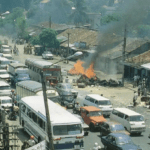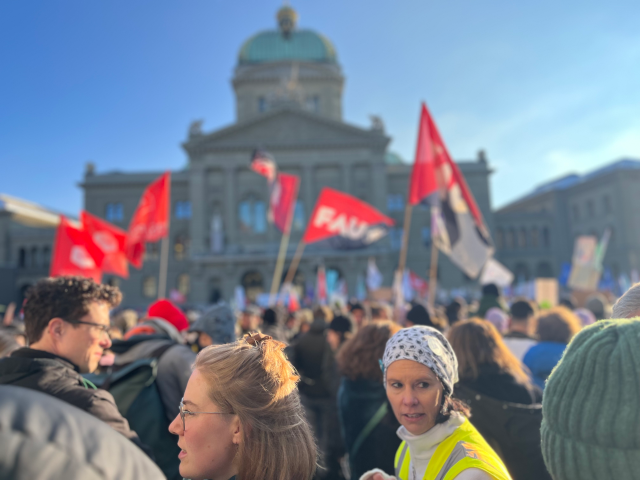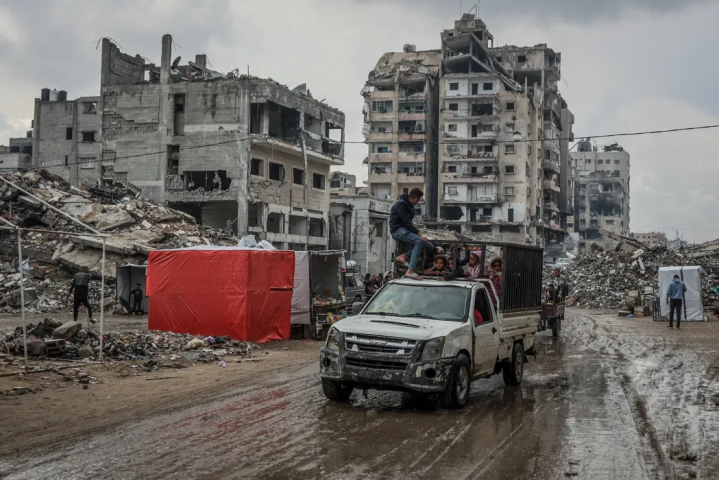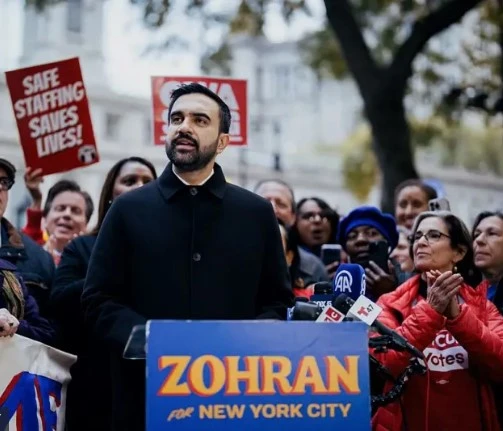Note for the article
This article was written by Comrade Upali Cooray in the early period of 1980s in order to promote a discussion on “National Question” among progressives in Sri Lanka. Today, All Sri Lankans are heading for Presidential election on 21st September 2024 and the majority of the people are demanding to establish democracy; but no of any principle candidates are giving priority to National question and self-determination of Tamil-speaking people. It is a major failure of ruling elites of Sri Lanka for last 75 years. Without giving a real solution to national question in Sri Lanka, Sri Lankan people are not going to have capitalist democracy at all.
Wilfred Silva
THE NATIONAL QUESTION AND THE STRUGGLE FOR DEMOCRACY IN SRI LANKA
By Upali Cooray
INTRODUCTION
The struggle for self-determination by the Tamil Nation in the North & East has been the subject of wide international discussion and debate. Often, the whole issue of democracy in Sri Lanka has been confined to a discussion of Tamil rights. It is not only important to situate the national question in its social and historical context but also to understand the specific character of the Sri Lankan socio-economic formation as well as conjectural economic and political factors which has enabled the dominant class to divide the oppressed masses, progressively restrict democratic liberties and to impose a strong state. This is necessary not in order to minimise or depreciate the importance of the National question but in order
- To ascertain which social layers could effectively combine their forces in the struggle for democracy and self-determination; and
- To formulate a programme of issues and demands around which these social layers could be effectively mobilised to achieve this goal.
THE HISTORICAL CONTEXT
While the old debates amongst Sri Lankan leftist about the “stagiest theory” and “permanent revolution” was not entirely irrelevant, it is an unfortunate fact that little effort was made by traditional leftist parties to analyse the specific socio-economic formation that evolved as a result of imposition of “capitalism from above” by British imperialism on the traditional Lankan society and the subsequent transfer of political power to the Lankan elite. It is not possible to dwell on these matters at length here. However, it is important to indicate some of the key aspects of this socio-economic formation:
(a) The Economy of the new Lankan state was based on
- super – exploitation of the plantation workers;
- Juridical recognition of the dispossession of the peasantry; and the
- Exploitation of an emerging urban working class;
(b) The ruling elite was able to maintain this system of exploitation not with the assistance of traditional bourgeois ideology but with the tried and tested system of traditional ideological domination of the masses – i.e. Sinhala Buddhism. Sinhala Buddhism had little in common with either principles or practice of Buddhist philosophy. Like the Anglican Church which served the “King and country” Sinhala Buddhism provided the ideological underpinnings for the maintenance of a malformed capitalist socio-economic formation. Sinhala chauvinism was an essential ingredient of this ideology – thus it enabled even Sinhala workers to condone blatant discrimination of the Tamil plantation workers. Narrow insular nationalism was another feature of this ideology; it provided a false sense of security to the Sinhala masses (as a chosen race superior to all others). It condoned caste oppression and the subjugation of women. Although Buddhist philosophy was based on the doctrine of non-violence (Ahimsa) it justified violence against the enemies of the Sinhala (Chosen) race. It had traditionally upheld the divine right of kings to rule the masses and when necessary to suppress them by resorting to barbaric force. Rarely did it object to the use of torture or group sanctions to punish recalcitrant individuals. Furthermore, Sinhala Buddhism reinforced the repressive character of the traditional society and family.
(c) In essence the nuclei of this society – i.e. the family remained by and large a patriarchal and a repressive institution. Although with the growth of capitalist relations the size of the family became smaller, particularly in urban areas, the authoritarian and repressive character remained intact.
(d) The authoritarian character of the family, on the one hand and the Sinhala Buddhist ideology (which sanctioned the hierarchical power structures and promoted chauvinism) on the other, influenced all social institutions. Repressive violence was a key element in all social institutions – the School, workplace and the State.
(e) Although the working class movement succeeded in effecting some social change – e.g. in relation to caste oppression and the development of welfare provisions, it was both ideologically and organisationally too weak to confront and defeat anti-democratic and reactionary ideological influence of these traditional institutions. The middle class intelligentsia was much more subservient to the dominant class than their counterparts in advanced capitalist countries.
POLITICAL ALLIANCES AND THE POLITICAL STRUGGLE
The unique feature which distinguishes the Sri Lanka from other South Asian countries was the fact that in Sri Lanka (Unlike e.g. India) the dominant elite (The landowners and the emerging bourgeoisie) did not read the struggle for independence or the creation of parliamentary (bourgeois) democratic rule. In fact, they resisted any efforts to extend the franchise and were only concerned about the relative influence they had in the society dominated by British imperialism. It was, in fact, the Marxist influenced Suriya Mal movement and later the LSSP that initiated and sustained the struggle for independence, and bourgeois democracy. The initial advantage the LSSP had in gaining substantial representation in parliament was not least due to their consistent and determined struggle for independence.
Furthermore, the welfare measures the bourgeoisie had to implement in order to prevent the LSSP gaining political hegemony also resulted in a form of stratification in society that created the objective conditions for polarisation of political forces within the left as well as the right.
In relation to the left – Initially the LSSP – the Inevitable consequences of spearheading the struggle for national independence was the mobilisation of two contradictory social layers within the same organisation – i.e a working class current and a petty bourgeois nationalist current. While this “coalition” assisted the LSSP initially to gain prominence and extend their influence, it also contained the seeds of its subsequent demise. While the subsequent trajectory of LSSP’s development was not inevitable, several factors made it difficult for the proletarian current to hegemonize and contain the petty bourgeois nationalist current – not least the reactionary role played by the communist party.
The divisions in the left were mirrored by divisions in the right – largely representing the contradiction between those layers who are already linked to imperialist interest and thus enjoying economic hegemony and those seeking to get a room at the top. Since the base of the bourgeoisie was very limited, both groups sought to mobilise the vast mass of petty bourgeois forces behind its banner. And indelibly inscribed in the banners of both bourgeois parties was the slogan of Sinhala chauvinism. Although They targeted different social groups at different times – Muslims, plantation workers and “Ceylon Tamils” – their chauvinist policies inevitably undermined any hope of creating an integrated “Sri Lankan nation”. Although initially the Left resisted these reactionary policies, within two decades of independence the majority of them succumbed to the parliamentarism pressures and to a greater or lesser extent adopted the same policies. Thus, eventually, “Right” as well as the “Left” could not break free from the dead hand of Sinhala Chauvinism.
It is important to underscore that the Tamil bourgeois political formations too reinforced this trend. In fact, initially it was the Tamil Congress that enabled the UNP to disenfranchise the Plantation Workers – at a time when the left and even some liberal bourgeois elements resisted these pressures. This was the thin end of the wedge. The Tamil bourgeoisie continued to support in one form or another the ruling elite despite their chauvinism and refused to ally with the Left. Thus, we see a convergence of interest between the Tamil and the Sinhala elite.
EROSION OF DEMOCRACY
The gradual erosion of bourgeois democratic liberties, which began with the disenfranchisement of the plantation workers, have been hastened by the uninterrupted deterioration of the economic situation. In their attempt to secure political support of the majority Sinhala people successive governments sought to remove or restrict the rights that were enjoyed by the minority ethnic groups – Sinhala only, repeal of constitutional safeguards in the Soulbury Constitution, Standardisation etc and forcibly suppress any movement which sought to raise demands relating to their specific oppression. The ethnic minorities became scapegoats for the economic bankruptcy of the bourgeoisie and their allies. However, by the 1970s, it was clear that the scratch had turned into gangrene. The emergence of the JVP signified the growth of numerous literate, unemployed youth who were alienated from the socio-economic system. Its limited political horizons, its tactics and its simplistic solutions all carried the hallmarks of the particular social stratum they represented.
CONJUNCTUREL CRISIS AND RISE OF BARBARISM
This process of gradual erosion of democratic rights throughout the 70s dramatically changed with the election of the UNP government in 1977. It conceded with an important conjuncture in a number of economic and political factors – growth of Reaganomics / Thatcherism and the new drive towards open market economics, intensification of inter-imperialist competition, attempt by American imperialism to erase the scars of Vietnam defeats, the emergence of Armed Eelam groups, blatant use of goon squads by the government to deal with students / workers etc, centralisation of executive power in the hands of one person, terminal decline of traditional Left parties, the inability and unwillingness of Tamil bourgeoisie to join the UNP in a coalition, political impotence of the SLFP etc – all set the scene for the growth of a strong state. The routine use of torture, use of death squads, mass killings, the subversion of law and order by the government has become the salient features of bourgeois rule today.
A GENERALISED STRUGGLE FOR DEMOCRACY
The process which began with the suppression of democratic rights of the Plantation workers have now culminated in the suppression of democratic liberties of all Sri Lankans. It is therefore appropriate for us to recall Marx’s prophetic words – “a nation that oppresses another can never be free”. Today, it is crystal clear that the struggle for democracy cannot take place in a sectoral and fragmented basis. Although it may appear as a banal truism, it is necessary to underscore the fact that the ruling class has been able to maintain themselves in power so long not because of their inherent strength, but because they have been able to divide and rule those who oppose them. The predominantly Sinhala opposition parties have a heavy responsibility to convince the Tamil nation that they do not mere seek to replace the UNP, but they have a genuine programme of action to ensure democratic liberties to the Tamil nation. Similarly, the Tamil militants will never succeed in achieving democratic freedoms with or without Eelam unless (a) they are prepared to guarantee the democratic freedoms they seek to all Tamils and ethnic minorities in their midst and (b) forge alliances with other oppressed layers including those amongst the majority Sinhala nation to fight against their common enemy.
Edited and published by Wilfred Silva
![]()




